This article was medically reviewed by Luba Lee, FNP-BC, MS. Luba Lee, FNP-BC is a Board-Certified Family Nurse Practitioner (FNP) and educator in Tennessee with over a decade of clinical experience. Luba has certifications in Pediatric Advanced Life Support (PALS), Emergency Medicine, Advanced Cardiac Life Support (ACLS), Team Building, and Critical Care Nursing. She received her Master of Science in Nursing (MSN) from the University of Tennessee in 2006.
There are 11 references cited in this article, which can be found at the bottom of the page.
This article has been viewed 81,645 times.
Seborrheic dermatitis is a common, chronic, inflammatory skin condition that frequently affects the scalp, scalp margins, eyebrows, base of eyelashes, chest, upper back, nose and ears. It can cause patches of white or yellow scales over greasy skin, redness, rashes, and dandruff. The yeast Malassezia, genetic and environmental factors are believed to play a role in seborrheic dermatitis. In infants, seborrheic dermatitis affects scalp and forehead and often called “cradle cap.” Adolescents and adults of all ages are susceptible, particularly those with a coexisting neurologic disease or who are HIV positive.
Steps
Treating the Condition With Over-the-Counter Shampoos
-
1Shampoo your hair and scalp at home. This is more for when applying dandruff shampoo treatment on the scalp.[1] [2]
- The over-the-counter treatments for seborrheic dermatitis in shampoos should include one of the following: coal tar, ketoconazole, salicylic acid, selenium sulfide, or zinc pyrithione.
- Wash the scalp daily with the chosen product and warm (not hot) water so the skin is not damaged.
- Continue this for a couple of weeks. If the condition hasn't improved, gotten worse, or you are otherwise concerned about the situation then you need to consult your doctor.
- Most therapeutic shampoos should be left on a minimum of five to 10 minutes before rinsing.
- Gently clean your eyelids by washing them each night with baby shampoo and wipe away scales with a cotton swab. Warm or hot compresses also may help to loosen the scales.
- This is usually the step to take for infants with "cradle cap" irritation.
-
2Apply treatment creams, gels, and skin care products for other areas. The dandruff shampoo treatment may be very specific, but you can still look for several qualities in products for other areas of your body.[3] [4] [5]
- Look for antifungal treatments, creams that fight rash, itching, and inflammation.
- Get skin moisturizing creams and gels. Find ones that are oil based (not water based) so they actually trap in moisture.
- Treat the affected area to regular washing with the cream/gel a couple of times per day.
- Continue this regular washing for a week or so. If there is no marked improvement, worsening of the condition, or you are worried about the condition then you should consult your doctor.
- For treating the chest, medicated shampoos may be used. Triamcinolone 0.1% lotion can be applied twice a day until clear and then use once or twice a week.
Advertisement -
3Apply or ingest products with alternative additives. There are a number of natural remedies that are unverified by scientific research but are considered helpful by some based on anecdotal evidence, or personal experience. You can add these products to your shampoos and creams.[6] [7] [8]
- You can try adding tea tree oil to your shampoo. Adding 10 to 12 drops could add some anti-fungal and astringent properties to the treatment. But there are studies suggesting that this substance has a high risk of inducing allergic reactions.
- Taking fish oil supplements can help reduce inflammation and accelerate processing of other vitamins which help with skin healing.
- Apply creams with aloe vera. Aloe has antibacterial and skin healing properties thanks to its improving of blood circulation.
- Taking probiotics, vitamin C, vitamin D can boost immunity and help with dermatitis.
-
4Talk to your doctor. If none of the over-the-counter home remedies work, and/or your condition worsens, then you need to seek medical attention.[9]
- You can help your doctor help you by preparing to answer questions about your symptoms, timing of your condition, treatments you've tried, what other medicines you are on, and any life changes or stress you might be experiencing.
-
5Apply shampoos with more care when dealing with an infant. Infants' skin and scalp may be more easily irritated by some products. Consult a pediatrician if you are unsure of what to use.[10] [11]
- Use a bland shampoo such as Johnson’s Baby Shampoo. Leave it on for two to three minutes while gently scrubbing the baby's scalp with soft brush to remove scale and crust. Rinse thoroughly. Repeat this two to three times per week.
- Don't move on to dandruff shampoos or other lotions without consulting a pediatrician.
- Apply a topical steroid lotion of low potency to the areas on the scalp, such as hydrocortisone lotion 1% twice a day for two weeks.
- To treat more extensive cradle cap, or in the milder cases in which medicated shampoo was not successful, treatment involves the removal of some of the scale prior to use of the medicated shampoo. Apply peanut or olive oil to the scalp at bedtime overnight to loosen scales, and then shampoo in the morning with one of the medicated shampoos.
- If none of these techniques work or you want to try other products then you must consult a pediatrician.
Using Medicated Shampoos and Creams
-
1Apply creams, shampoos or ointments that medically control inflammation. Your doctor may recommend one of several prescription-strength substances to apply to the affected skin.[12]
- These shampoos and creams may include: hydrocortisone, fluocinolone, or desonide. They are easy to apply and effective for seborrheic dermatitis, but extended use for months can lead to thinning skin or streaking.
- Desonide (or sometimes DesOwen) is a corticosteroid applied to the scalp or skin.
-
2Rub on a medicated scalp product along with anti-fungal shampoo. Your doctor may simply add the scalp medicine to your existing routine, but follow their advice precisely.[13] [14]
- For example you may have a shampoo with ketoconazole that you already are using regularly. But your doctor may then add a medicated scalp product such as clobetasol (Temovate) for you to apply twice a week.
-
3Ingest pill-based treatments. Sometimes your doctor may prescribe an antifungal medication to fight condition from the inside.[15] [16]
- A prescription used for this situation is sometimes terbinafine (Lamisil).
- This is not a common recommendation because of the higher risk of side effects from the drug including liver problems and allergic reactions.
-
4Consume immune-system affecting drugs. These are higher risk medicines that alter the skin's immune defense system to reduce allergic reactions that cause irritation.[17] [18]
- Your doctor may prescribe creams, topical lotions, or similar medicines that contain a class of drugs called calcineurin inhibitors. They are usually tacrolimus (Protopic) and pimecrolimus (Elidel).
- These topical drugs may be at least as effective as corticosteroids, and with fewer side effects. They do have an increased risk of cancer, higher purchase cost, and can't be used by someone with an already weakened immune system.
-
5Apply antibacterial gels or creams. Your doctor may prescribe one of these until you see your condition improving.[19]
- Your doctor's prescription may include metronidazole (MetroLotion, Metrogel) to use once or twice a day.
Pursuing Other Treatments
-
1Wash your skin regularly. Keep the affected area in particular clean and soft.[20]
- Clean off soap completely from your body and scalp. Don't use abrasive soaps or harsh chemicals. Use moisturizers. Avoid harsh soaps and use a moisturizer.
- Use warm water — not hot.
-
2Clean your eyelids. This is one of the more difficult areas to clean and treat.[21]
- If the skin of your eyelids becomes red or scaly then you can wash them nightly with baby shampoo.
- Use a cotton swab to wipe away scaly skin.
- Apply a warm compress to soothe the skin and wipe away scaly skin as well.
-
3Remove scaly skin from your hair. This is not quite the same as a full dandruff treatment, but it may help with light removal of skin particles from the hair itself.[22]
- Apply a few drops of mineral oil or olive oil directly to your scalp.
- Leave the drops in for one hour.
- Comb or brush out your hair and wash it with warm water.
Warnings
- Avoid scratching affected areas.⧼thumbs_response⧽
- See your doctor especially if you're condition is causing you to lose sleep or disrupting your daily routines.⧼thumbs_response⧽
- Avoid using alcohol-based products⧼thumbs_response⧽
- See your doctor If your condition is causing you anxiety, embarrassment, you think you're infected, or have tried cleansing techniques unsuccessfully.⧼thumbs_response⧽
- Take extra care when using over-the-counter products with infants as irritation is a greater risk. Consult a pediatrician.⧼thumbs_response⧽
- Always consult a doctor when in need of medical assistance and/or pursuing a treatment.⧼thumbs_response⧽
- This condition can be confused with psoriasis, eczema, acne rosacea, or an allergic reaction.⧼thumbs_response⧽
References
- ↑ http://www.mayoclinic.org/diseases-conditions/seborrheic-dermatitis/basics/treatment/con-20031872
- ↑ http://www.webmd.com/skin-problems-and-treatments/seborrheic-dermatitis-medref?page=2
- ↑ http://www.mayoclinic.org/diseases-conditions/seborrheic-dermatitis/basics/treatment/con-20031872
- ↑ http://www.webmd.com/skin-problems-and-treatments/seborrheic-dermatitis-medref?page=2
- ↑ http://www.mayoclinic.org/diseases-conditions/dry-skin/in-depth/moisturizers/ART-20044232
- ↑ http://www.mayoclinic.org/diseases-conditions/seborrheic-dermatitis/basics/alternative-medicine/CON-20031872
- ↑ http://www.natural-homeremedies.com/blog/natural-cure-for-seborrheic-dermatitis/
- ↑ http://www.webmd.com/vitamins-supplements/ingredientmono-607-ALOE.aspx?activeIngredientId=607&activeIngredientName=ALOE
- ↑ http://www.mayoclinic.org/diseases-conditions/seborrheic-dermatitis/basics/preparing-for-your-appointment/con-20031872
- ↑ http://www.mayoclinic.org/diseases-conditions/seborrheic-dermatitis/basics/treatment/con-20031872
- ↑ http://www.webmd.com/skin-problems-and-treatments/seborrheic-dermatitis-medref?page=2
- ↑ http://www.mayoclinic.org/diseases-conditions/seborrheic-dermatitis/basics/treatment/con-20031872
- ↑ http://www.mayoclinic.org/diseases-conditions/seborrheic-dermatitis/basics/treatment/con-20031872
- ↑ http://www.webmd.com/drugs/2/drug-4403-5253/clobetasol-topical/clobetasolscalpsolution-topical/details
- ↑ http://www.mayoclinic.org/diseases-conditions/seborrheic-dermatitis/basics/treatment/con-20031872
- ↑ http://www.webmd.com/drugs/2/drug-12422-8262/lamisil-oral/terbinafine-oral/details
- ↑ http://www.mayoclinic.org/diseases-conditions/seborrheic-dermatitis/basics/treatment/con-20031872
- ↑ http://www.webmd.com/drugs/2/drug-22383/elidel-topical/details
- ↑ http://www.mayoclinic.org/diseases-conditions/seborrheic-dermatitis/basics/treatment/con-20031872
- ↑ https://www.mayoclinic.org/diseases-conditions/seborrheic-dermatitis/diagnosis-treatment/drc-20352714
- ↑ https://www.mayoclinic.org/diseases-conditions/seborrheic-dermatitis/diagnosis-treatment/drc-20352714
- ↑ https://www.mayoclinic.org/diseases-conditions/seborrheic-dermatitis/diagnosis-treatment/drc-20352714
About This Article
To treat seborrheic dermatitis, try washing the affected area with an over-the-counter anti-dandruff shampoo and warm water once a day to keep the skin clean. Alternatively, add 10 drops of tea tree oil to your normal shampoo, since the oil has anti-fungal and astringent properties that treat dermatitis. Additionally, consider taking fish oil supplements to help reduce skin inflammation and promote healing. If at-home treatments don’t help, talk to your doctor, who may prescribe medication or recommend an antibacterial cream. For advice from our Medical co-author on how to treat seborrheic dermatitis in children and infants, read on!
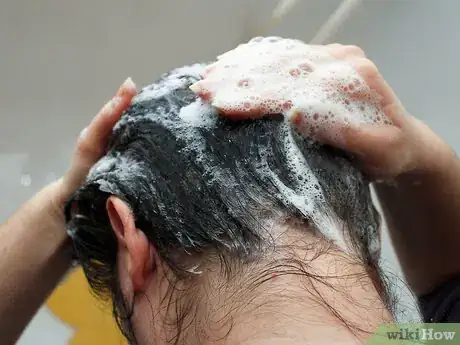
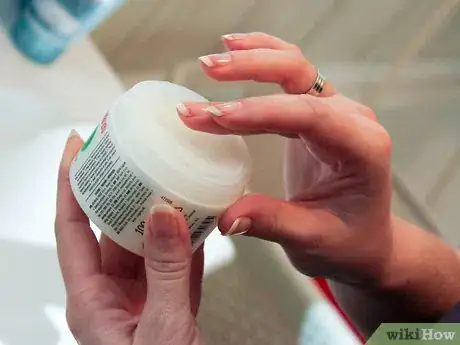

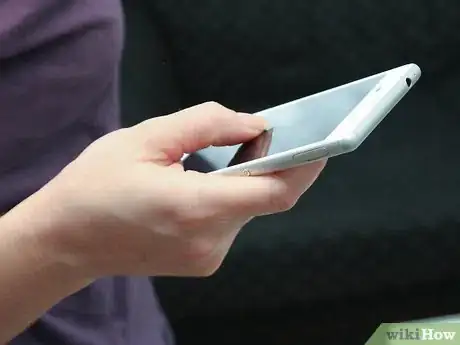
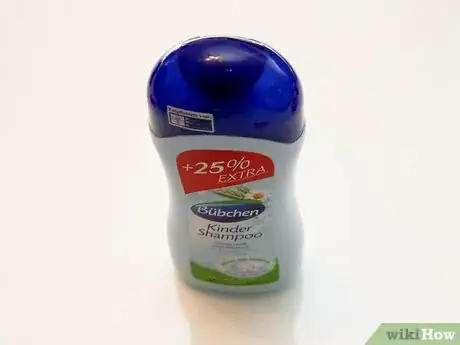

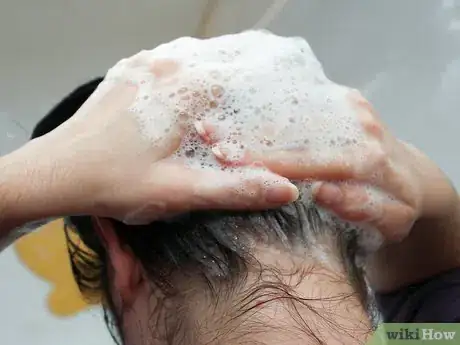

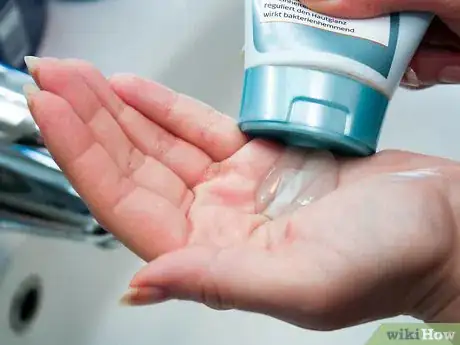
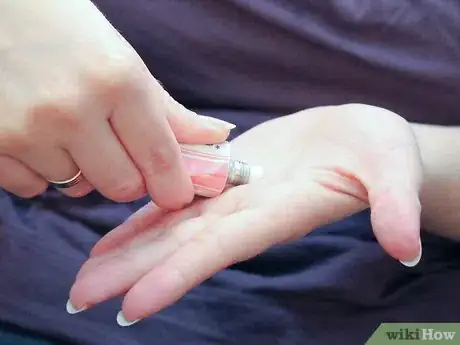

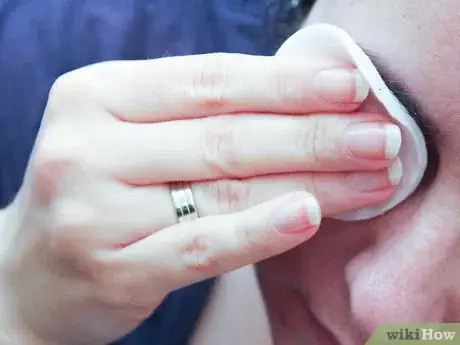
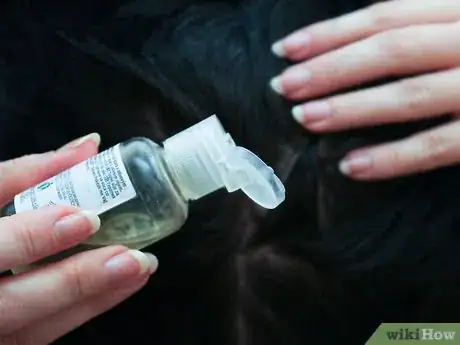

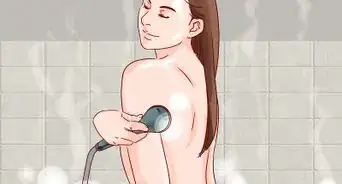
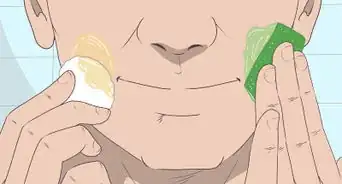



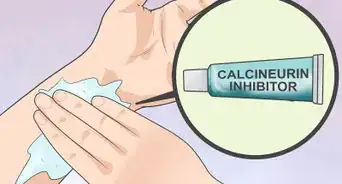
















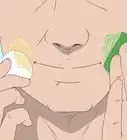




































Medical Disclaimer
The content of this article is not intended to be a substitute for professional medical advice, examination, diagnosis, or treatment. You should always contact your doctor or other qualified healthcare professional before starting, changing, or stopping any kind of health treatment.
Read More...